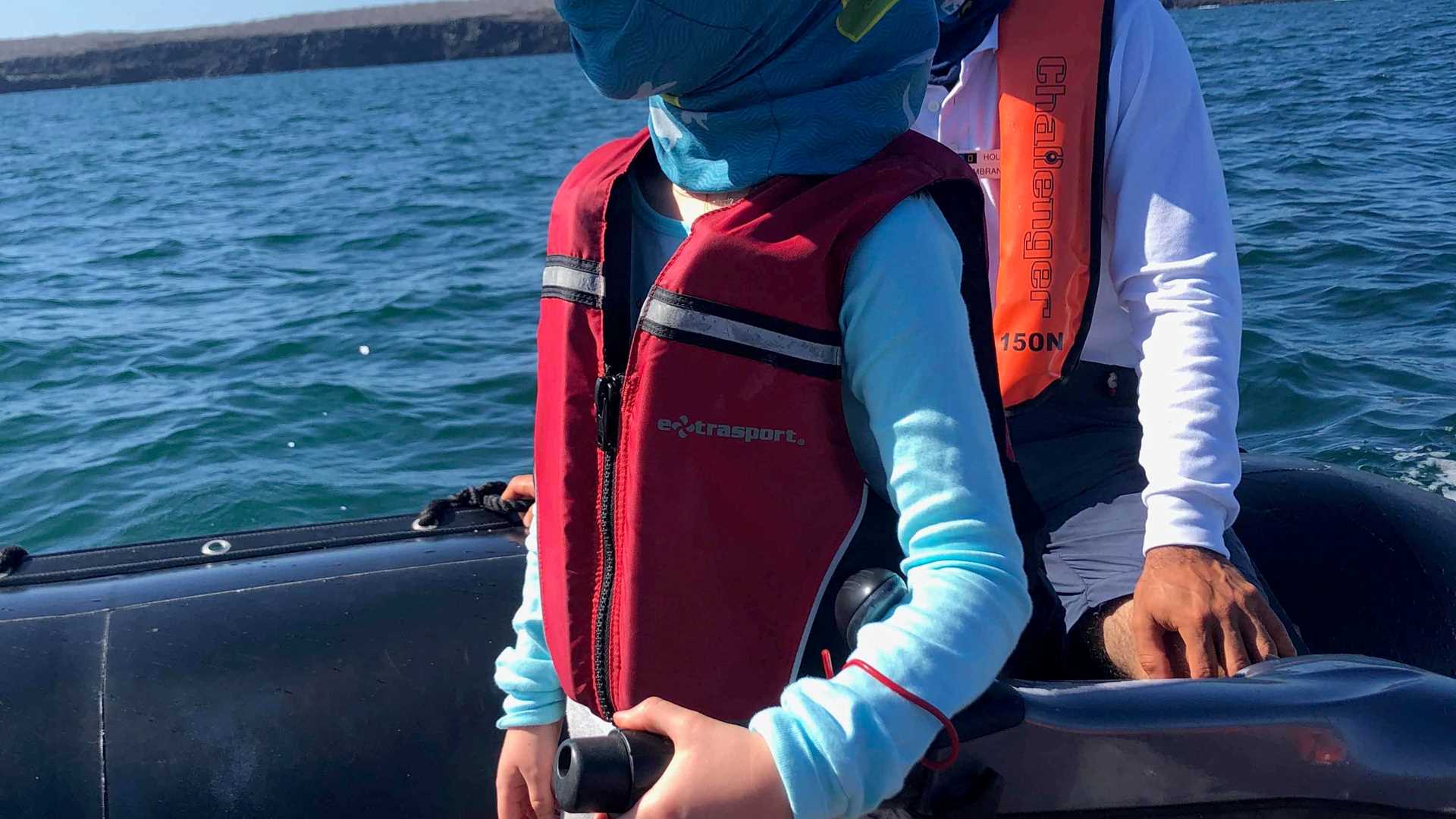Today is the last day of our expedition, and National Geographic Islander is on Genovesa Island, ready for another day of surprises. We had a full day of activities, starting with a pre-breakfast kayaking outing along the cove. After breakfast we headed out on a nice hike in search of red-footed boobies, young frigate birds, and Nazca bobbies that we spotted everywhere. Then during our snorkeling outing, we saw hammerhead sharks, many fish, and mobula rays—that was amazing! Afterward we went on our last hike of the day, where we spotted three Galapagos short-eared owls and had an amazing sunset on our way back home.
- Daily Expedition Reports
- 05 Jan 2019
Genovesa Island, 1/5/2019, National Geographic Islander
- Aboard the National Geographic Islander
- Galápagos
Ixora Berdonces, Naturalist
Ixora was born in the Galapagos Islands, back when the streets were made of sand and gravel. Void of TV and tablets, her childhood friends and pristine natural surroundings made for an inspiring upbringing. She was always drawn to the ocean and her l...
Read MoreJulio Rodriguez, Videographer
Born and raised in Ecuador, the son of Spanish and American parents, Julio developed a passion for storytelling and environmental conservation at an early age. After majoring in History at Carleton College (Minnesota), with a thesis on the Basque ant...
Read MoreShare Report
Related Reports
11/23/2022
Read
National Geographic Islander II
Isabela and Fernandina
Our day began with the chance to point out a lot of interesting geological features as we enjoyed Zodiac tours along a massive flank of Ecuador Volcano on Punta Vicente Roca. In the afternoon, we took a sunny walk on Punta Espinoza on Fernandina Island. We spotted many iguanas, and a bunch of sea lions hanging around, too.
11/22/2022
Read
National Geographic Islander II
North Seymour & Rabida Islands
Relatively small and low compared to neighboring Santa Cruz, North Seymour is located to the north of Baltra. The island is dry with predominantly low shrubs, like prickly pear cacti. The incense trees are bare during the dry season. Seabirds like frigatebirds and blue-footed boobies nest on the island, and sea lions rest on the sand when they are not fishing. Land and marine iguanas also live here. Rabida is in the middle of the archipelago and has a striking red sand beach. We observed a small colony of sea lions of all ages resting or nursing. Behind the beach, American flamingos nest in a brackish lagoon. This island is full of contrasts and wildlife that we enjoyed observing during this day of expedition.









